Spring: time for house cleaning, including the bathroom. Which shower enclosures are the easiest and quickest to clean, and why? Find out in this post, together with some tips for keeping your shower in pristine condition.
So, today let’s talk about cleaning the bathroom, paying particular attention to the shower area, which is one of the most difficult to clean and sanitise. The reason is probably the amount of time needed to eliminate limescale and soap deposits from tiles and shower enclosures compared to daily cleaning of more easily accessible fixtures.
If you are still planning your bathroom and have to choose the decor, you can go for certain shower enclosure models that facilitate daily cleaning or require less effort. Below we reveal these and the reason for our choice!
However, first a note about the individual elements of a shower area never to neglect.
How to clean a shower enclosure
Contrary to what one might think, it is not enough just to keep the glass parts of the shower clean. The same attention should be paid to the metal profiles, gaskets and shower tray.
- Glass: should be rinsed after every shower and dried, to prevent soap, limescale and body lotion residue from building up. Only if strictly necessary, periodically clean with special products (delicate) to remove grease. Be careful with anti-limescale treated glass: follow the manufacturer’s maintenance instructions carefully because in such cases chemical detergents should not normally be used.
- Profiles: in aluminium or steel, clean with mild detergents and dry. Do not use abrasive sponges, which will scratch the surface. Take care with coloured painted surfaces: it’s best to be even more delicate in this case and use mild soap, which is generally sufficient. The critical point is usually the bottom profile (if applicable, because some models eliminate these for aesthetic purposes), which requires more accurate care: a small nail brush can be useful here.
- Gaskets: as these are in plastic, they should be kept clean and soft because over time they tend to darken and harden (risk of cracking), particularly those in contact with the shower tray. Water and mild soap are enough and if possible (when they can be removed from glass doors) it’s a good idea to remove them and clean them carefully. If they have deteriorated (but are still intact), try treating them with a solution of alcohol or hydrogen peroxide diluted in water. In any case, contact the manufacture to replace them.
- Shower tray: sometimes the hygiene of the shower tray is neglected, but our feet should always stand on a clean surface with no residue from a previous shower. A valid tip is to rinse the tray thoroughly to prevent soap, detergent, cream, oil, body lotions and shampoo from drying onto it. Pay attention to the material used for your shower tray: today each type has special maintenance instructions, which it’s best to consult to avoid using unsuitable products.
See all our shower trays and choose the one you like best
In general, the more frequent cleaning is, the more delicate it is, and less damage is done to surfaces and materials over time.
Now that you know all the critical points of shower enclosures it will be easier for you to understand the criteria used in creating our classification. So, here are the top five shower enclosures, from the easiest to the most awkward to clean:
Fixed glass panels
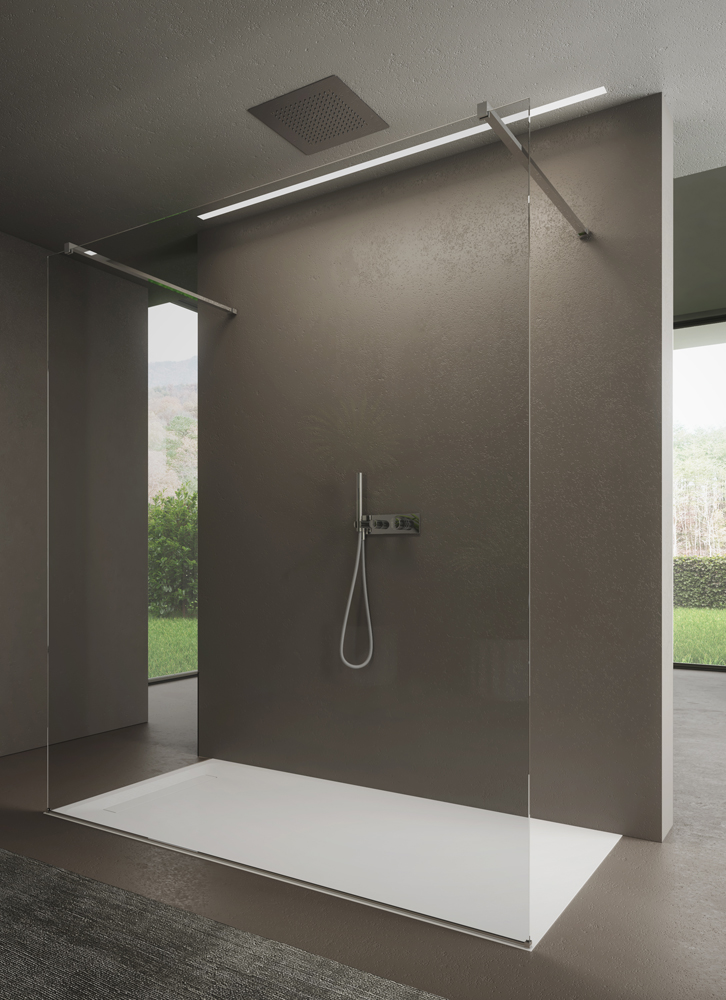
For obvious reasons, it is the easiest ever shower enclosure to clean, given that it lacks sliding systems, gaskets, openings, handles, wheels and hinges. The only element is a large glass panel fitted into a slim profile fixed to the floor and wall. For this type of shower the only critical point is the gasket between the profile and tiles, particularly if there is visible silicone residue, which must be eliminated.
2. Swing door
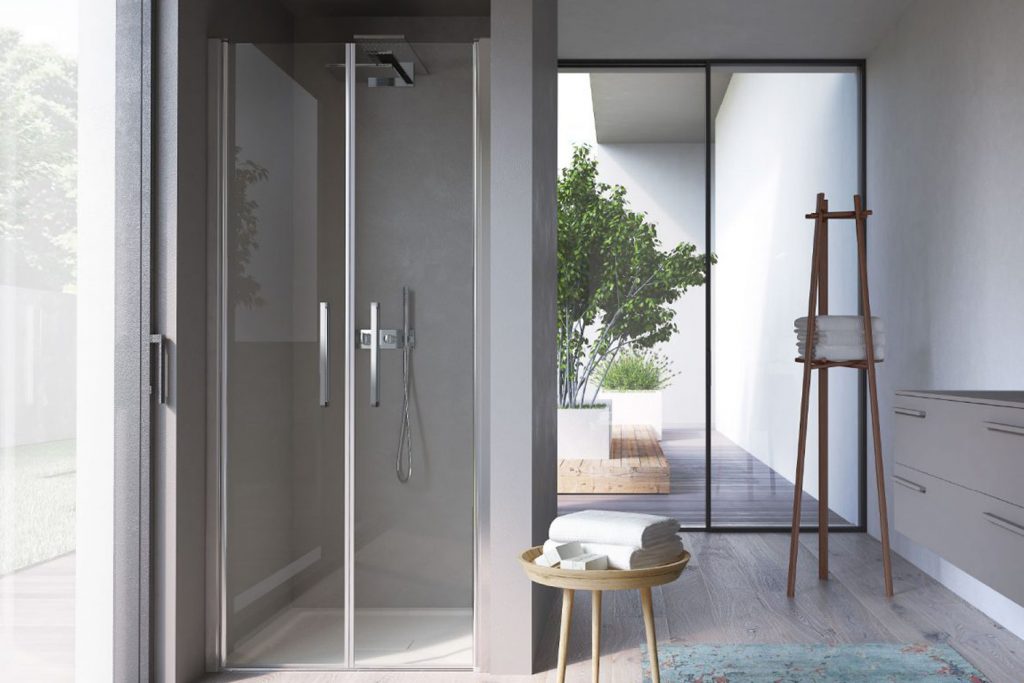
This is a two-panel shower door that opens outwards and closes inwards (just like a saloon door). It’s easy to clean because the panels can open outwards to be dried or washed, or closed inwards so they don’t drip on the floor outside the shower. Models without bottom and top profiles (with side frames) are even more convenient, although the bottom drip gaskets under the two panels (to stop the water from leaking outside the shower) require cleaning.
3. Hinged or pivot doors (single or double)
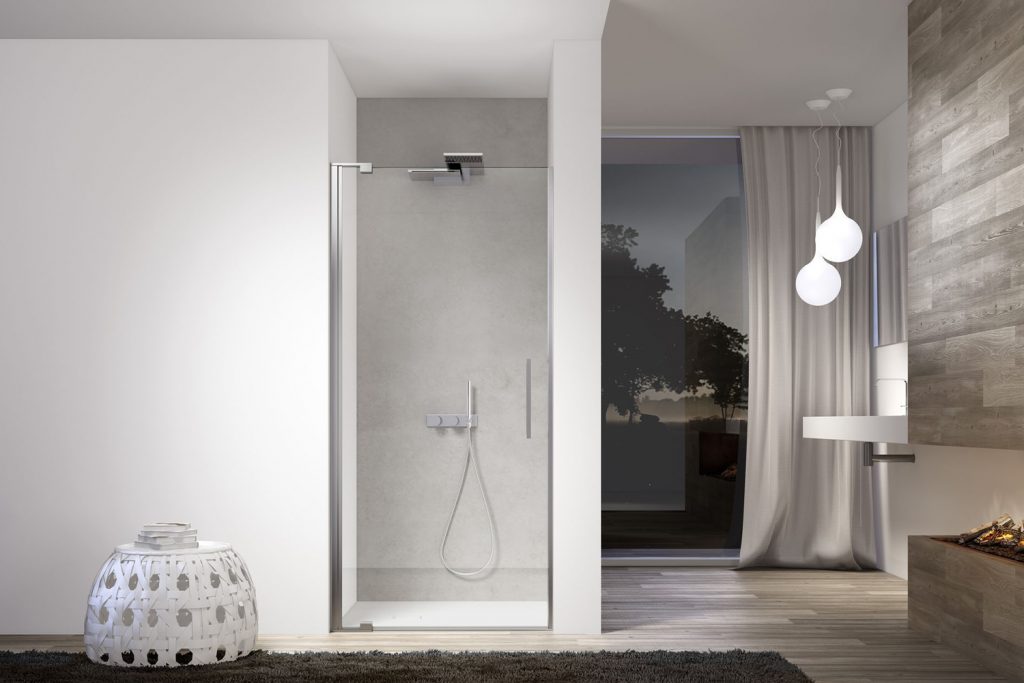
In this case the doors open outwards, but are easily cleaned, particularly on models with slim frames. Just open the doors outwards to clean the internal part and then dry off.
It’s always a good idea to take care of the gaskets, often used on models with very few metal profiles.
4. Hinged doors
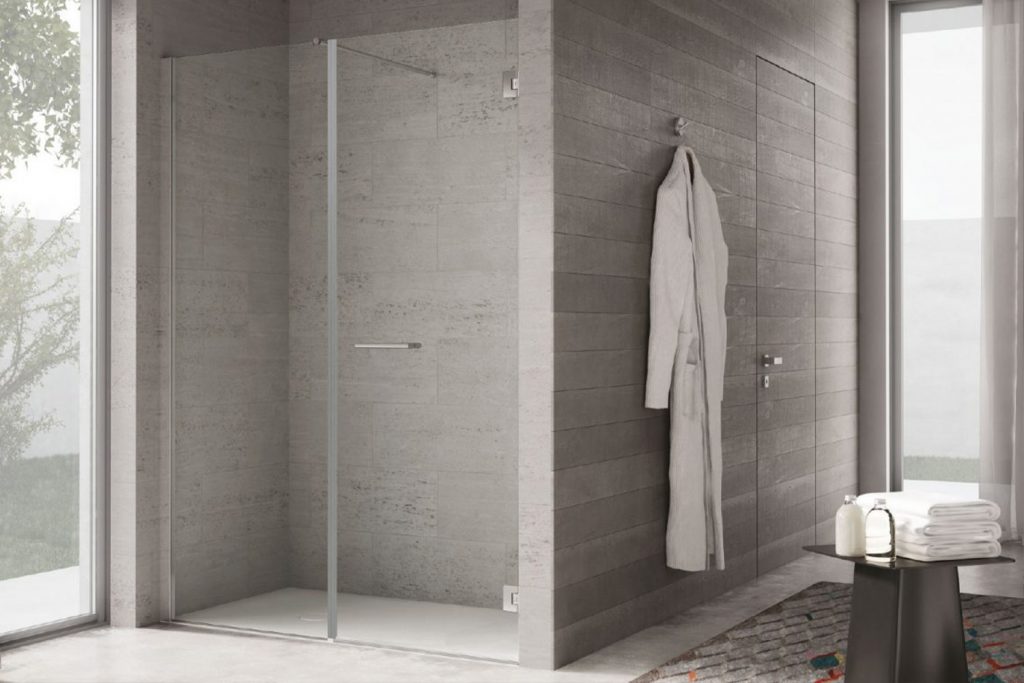
Included in this category are all types of shower with hinged openings (e.g. folding doors or hinged doors with a fixed panel). These models are practical, as they are similar to the ones mentioned above, but the hinges may complicate things. Take care not to spray aggressive glass-cleaning products on metal profiles and hinges, which should be treated more delicately.
5. Sliding doors
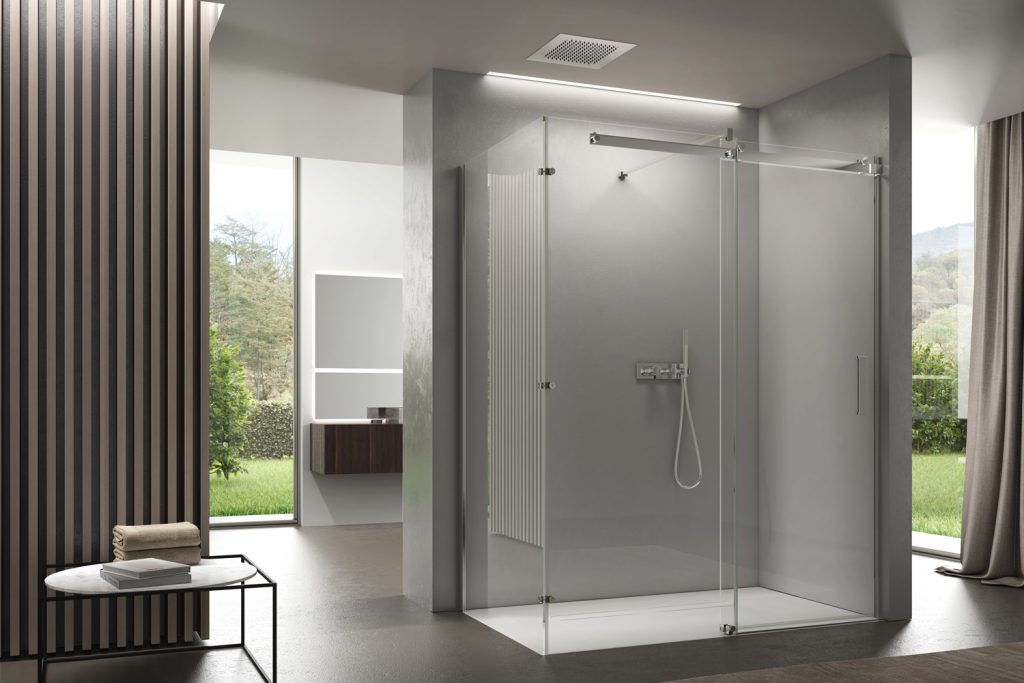
Although contemporary models have lighter frames with slim profiles, a sliding system slightly complicates things. There are top and bottom rails (often visible) to take Teflon runners or wheels which need to be cleaned periodically. Some models also have overlapping sliding and fixed doors, which can make cleaning awkward. Not to worry: although it takes a little more time and patience, these models can also be thoroughly cleaned.
If you have seen a model which could be ideal for you, according to the amount of care needed for daily cleaning, why not try planning it directly on our website.
Start configuring your shower now
Tips for choosing a shower enclosure that’s easy to clean:
Our top five is a list for consultation, but indications could vary according to the design of the models. So, what to do?
When purchasing a shower enclosure, it’s not always easy to realise whether it will be simple to manage, but there are some elements to take into account:
- Observe the structure of the model, the profiles and frame, to check whether they are linear or grooved;
- Check whether the sliding doors and fixed panels are overlapping: open and close them to check that there is total access to the glass surfaces when they’re closed;
- Check the hinges, imagine cleaning them to decide whether the operation will be simple;
- Ask if the gaskets can be removed for periodical cleaning and find out immediately if they can be replaced. It would be a good idea to procure some spare parts at the time of purchasing your shower enclosure.
An extra idea: to dry the glass parts after a shower, a hand-held squeegee is useful for eliminating water drops and limescale.
As an alternative, get into the habit of using a microfiber cloth immediately: it will give the same effect and take just a few seconds.
Squeaky-clean glass and no need to use more aggressive solutions will more than make up for this little chore, which will soon become a good habit.

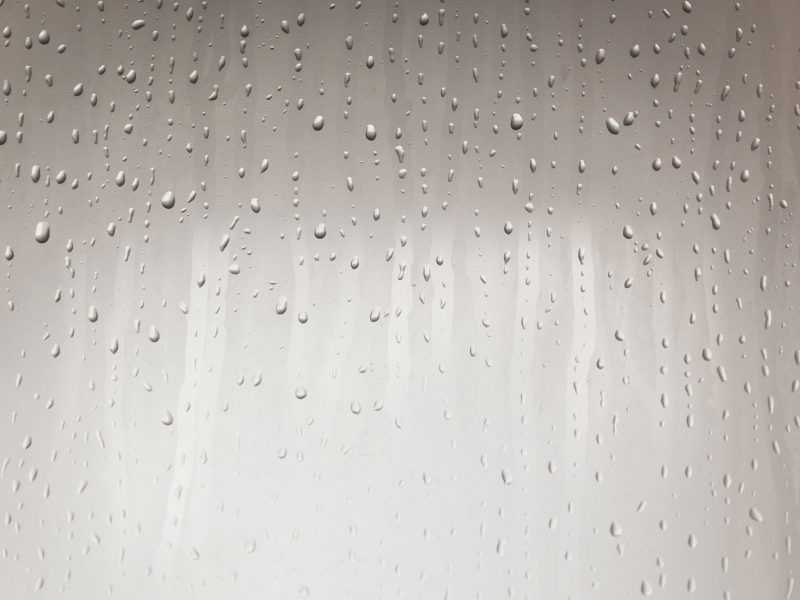


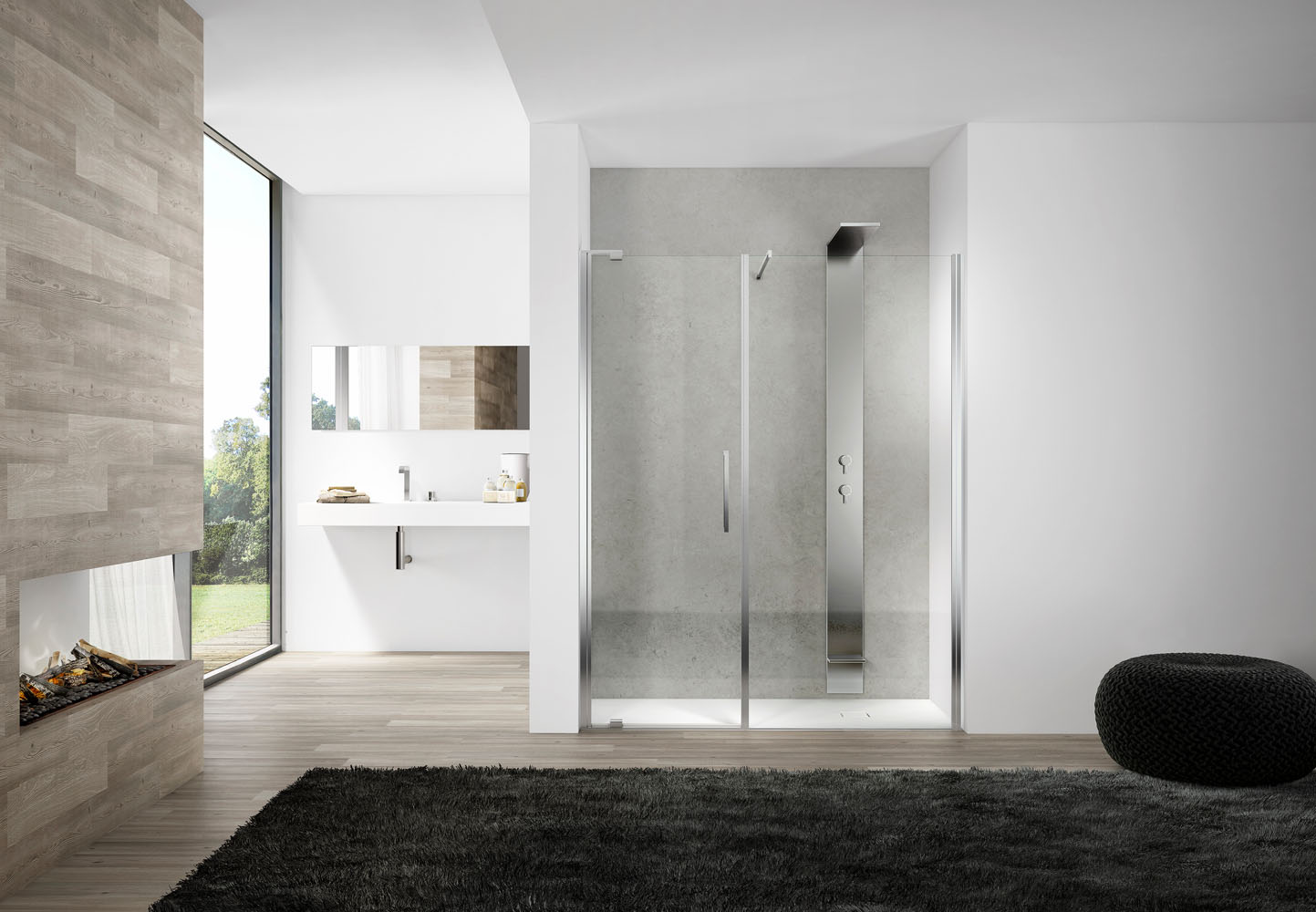


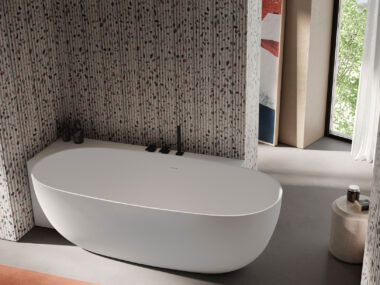

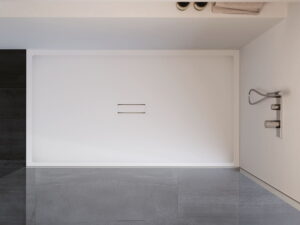
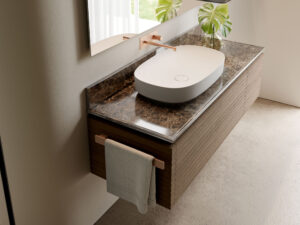

 Necessari
Necessari
 Funzionali
Funzionali
 Statistiche
Statistiche Marketing
Marketing